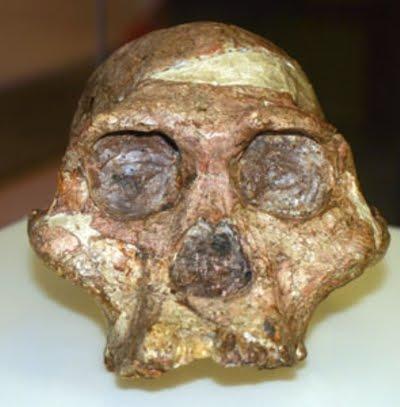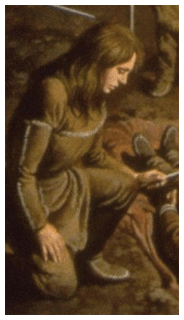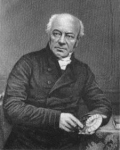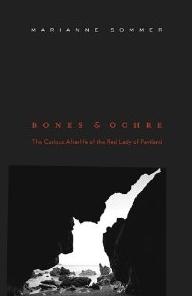- Latest Archaeology Updates
- Importance and applicability
- Famous Archaeologists
- Museums Collections
- Site Map
- World Heritage Sites
- World History Monuments
- Archaeological Organizations
- World Atlas of Archaeology
- Forensic Investigation and Geophysics
- Contact Us
- Movies based on Archaeology
- Frequently Asked Questions
- Archaeological discoveries
- Tell a Friend
- Archaeological Abbreviations
- Gallery Collections
- Famous-Museums site map
- Famous-archaeologists site map
- Archaeological Monuments site map
The Red Lady of Paviland is a human skeleton discovered within a cave in South Wales in 1823. The remains were found by Reverend William Buckland, who was the first person to describe a dinosaur skeleton. The remains are believed to be those of a male, and are estimated to be over 29,000 years old. It is the oldest example of a modern human in Western Europe and provides insight into the lifestyle and behavior of the people who lived in the area during the upper Paleolithic period.
The remains were found in Paviland Cave, which is located in the Gower Peninsula of South Wales. It is a limestone cave with two distinct chambers. The remains were found within the second chamber, which was filled with clay and gravel. When they were first discovered, the bones were covered in a thick coating of red ochre, which is a natural pigment made from iron oxide. The red pigment was thought to have been used to decorate the body and is the origin of the name "Red Lady".
The remains of the Red Lady of Paviland consist of a skull, a lower jaw, some ribs, and a few other bones. Analysis of the remains has revealed that the individual was in their early twenties and that they stood at about six feet tall. It is believed that the individual was a shaman due to the presence of the red ochre and the fact that no other artifacts were found with the remains.
The Red Lady of Paviland is an important discovery as it provides insight into the lives of individuals who lived during the upper Paleolithic period. It is a reminder that the world was once inhabited by people who were not only capable of sophisticated behavior, but also had a strong spiritual connection to their environment.
The Red Lady of Paviland is a human skeleton that was discovered in 1823 in a limestone cave in South Wales. It is believed to be over 30,000 years old and is the oldest human remains found in Britain.
The discovery was made by William Buckland, a geologist and paleontologist who was exploring the region in search of fossils. As he entered the cave, he noticed a reddish coloured layer of sediment that was rich in fossils. After further excavation he uncovered a skeleton that was stained with a red ochre pigment.
Buckland initially thought that he had discovered the remains of a Roman soldier and named the skeleton the Red Lady of Paviland. However, it was later determined that the skeleton was much older than had been initially assumed. Radiocarbon dating later revealed that it was over 30,000 years old.
The Red Lady of Paviland is a significant archaeological discovery as it provides valuable insights into the lives of our ancestors. It is also a reminder of the importance of scientific investigation and the discoveries that can be made when we take the time to explore our world.
- The Red Lady of Paviland is an ancient skeleton discovered in 1823, in the South Wales region of the United Kingdom.
- The remains, which are believed to be those of a male, were found in a cave that was used as a burial site by the ancient Celtic people of the area.
- The remains have been dated to around 33,000 years old, making them one of the oldest human remains to be discovered in Europe.
- The discovery of the Red Lady of Paviland is of particular interest to archaeologists due to the fact that the remains were found buried with a number of artifacts, including jewelry, tools, and clothing.
- This suggests that the burial site was a place of ritual significance, and that the individual was of importance to the people of the time.
- The artifacts found with the Red Lady of Paviland have led to speculation that the individual may have been a shaman or an important religious figure in the culture of the ancient Celts.
- This is supported by the fact that the artifacts found with the remains seem to suggest a belief in the afterlife, and the use of spiritual rituals in order to ensure the safe passage of the deceased into the afterlife.
- To the artifacts, the remains of the Red Lady have also been studied in an attempt to better understand the beliefs and practices of the ancient Celts.
- The bones of the individual were found to be stained red, leading to speculation that the individual may have been involved in rituals involving the use of blood.
- This suggests that the ancient Celts may have believed in some form of blood-based sacrifice as part of their religious practices.
- The discovery of the Red Lady of Paviland provides a fascinating insight into the beliefs and practices of the ancient Celts.
- The artifacts found with the remains, as well as the study of the bones, suggest that the individual may have been involved in spiritual rituals and practices of the time, and may have been a figure of importance in the culture of the ancient Celts.
The Red Lady of Paviland is one of the oldest human skeletons in the world and was discovered in the Gower Peninsula of Wales in 1823. It was originally thought to be a woman, hence the name, but later analysis of the bones suggested that the skeleton was actually that of a male.
The Red Lady of Paviland is significant in a number of ways. Firstly, the remains are estimated to be around 33,000 years old, making them some of the oldest human remains found in Europe and the British Isles. Secondly, the remains were found in an area known as the Paviland Cave, which had been used as a burial site for thousands of years and contained a remarkable number of artifacts and items of clothing. This has enabled archaeologists to gain an insight into the lives of the people who lived in the area during this time.
The discovery of the Red Lady of Paviland also had an impact on the field of archaeology. It increased the understanding of the Paleolithic period and enabled researchers to gain a greater understanding of the people who lived in the area during this time. Additionally, the remains provided a valuable insight into the beliefs and rituals of the people who were living in this region.
The remains of the Red Lady of Paviland have been studied extensively since their discovery, and the findings have been published in various books and papers. The significance of the remains has had a lasting impact on the field of archaeology, and the remains are still studied and discussed today.
The story surrounding the skeleton is now the focus of a major arts project, supported by the Arts Council of Wales, which will premiere in Carmarthen, West Wales, in early April 2010. .
Bones and Ochre: The Curious Afterlife of the Red Lady of Paviland Written by Marianne Sommer
When the ochre-stained bones were unearthed in a Welsh cave in 1823, they inspired unsettling questions regarding their origin. Their discoverer, William Buckland, declared the remains to be Post-Diluvian, possibly those of a taxman murdered by smugglers.
Rich Resources on Red Lady Of Paviland
The Paviland Cave
In 1823, the first recorded discovery of fossil human remains took place at Goat's Hole Cave in Paviland on the Gower peninsula of South Wales.
Amesbury Archer (or King of Stonehenge) is an early Bronze Age man, dating to around 2300 BC. His grave is of particular importance because of the rich valuables and the earliest gold objects ever found in England.
Otzi the Iceman is well naturally preserved mummy of a man. The man who was been captured in Ice was believed to be over 53 centuries old (3300 BC).
Java man is an interesting discovery to note that the find was not a complete specimen, but consisted merely of a skullcap, a femur, and three teeth. Many scientists of the day even suggested that Dubois' Java Man might have been the so-called "missing link
Kennewick Man is the name for the remains of a prehistoric man found on a bank of the Columbia River near Kennewick, Washington, on July 28, 1996. The Kennewick Man news story is one of the most significant archaeology stories of contemporary times.
Neandertal1 or Neanderthal was a species of genus Homo (Homo neanderthalensis) that inhabited Europe and parts of western Asia during the last ice age.
Peking Man (sometimes now called Beijing Man), also called Sinanthropus pekinensis (currently Homo erectus pekinensis), is an example of Homo erectus.
The Red Lady of Paviland is a fairly complete Upper Paleolithic-era human male skeleton dyed in red ochre, discovered in 1823 by Rev. William Buckland in one of the Paviland limestone caves of the Gower Peninsula in south Wales, dating from c29,000.
The Tollund man lived during the late 5th century BC and/or early 4th century BC, about 2,400 years . He was buried in a peat bog on the Jutland Peninsula in Denmark, a find known as a bog body.
Turkana Boy, the designation given to fossil KNM-WT (Kenya National Museum-West Turkana), is a nearly complete skeleton of a 12-year-old hominid boy who died 1.6 million years ago.Turkana Boy is classified as either Homo erectus or Homo ergaster.
The Dead Sea Scrolls are a collection of about 850 documents, including texts from the Hebrew Bible, which were discovered in eleven caves near Qumran, in a fortress northwest of the Dead Sea in Israel.
The Narmer Palette, or Great Hierakonpolis Palette, is a significant Egyptian archeological find, dating from about 3200 BC, containing some of the earliest hieroglyphic inscriptions ever found, and depicting the unification of Upper and Lower Egypt under Narmer.
Rosetta Stone is a dark granite stone (often incorrectly identified as "basalt") which provided modern researchers with translations of ancient text in Egyptian demotic script, Greek, and Egyptian hieroglyphics.
Linear B is the script that was used for writing Mycenaean, an early form of the Greek language. It occurrs primarily on tablets dated from the 14th and 13th centuries BC.
The Sweet Track is an ancient roadway in the Somerset Levels, England. As of the early 2000s, it is the oldest known engineered roadway in the world. An grand footpath that ran for almost 2km across the Somerset levels swamps.
Tautavel Man is an ancestor of Neanderthal man, was slightly different from his contemporaries living Asia and Africa. In the village of Tautavel is located in the South of France, one of the most ancient humans was found: the Tautavel Man.
The Galilee Boat which is also referred as the "Jesus Boat" was found by local Galilean inhabitants in January 1986. The boat was wrapped in a polyurethane shell and then immersed in a special tank of water to avoid quick disintegration.
The monumental Ekron inscription is dated, statistically and historically, to the first half of the seventh century B.C.E. The five lines of the inscription are together with this in a slit open border.
It wasn't long back when a lot of scholars were quizzical the real survival of a Roman Governor with the name Pontius Pilate, the procurator who ordered Jesus' crucifixion. In June 1961 close to Caesarea-on-the-Sea (Maritima) was unearthed this appealing limestone block.
In 1990 ornately decorate limestone ossuary (bone depository) was found in Jerusalem's Peace Forest. In the ossuary were the bones of two babies, a adolescent child, a teenage boy, an adult woman, and a man about 60years of age.
In biblical Israel, papyrus was the main form of writing substance. Once an authorized deed was written, it would be rolled up, one end crinkled in one-third of the width and the contrary end likewise folded in.
It is the Capital city of a prehistoric principality in what these days is on the northern part of the Syrian coast, just north of the city of Latakia.






